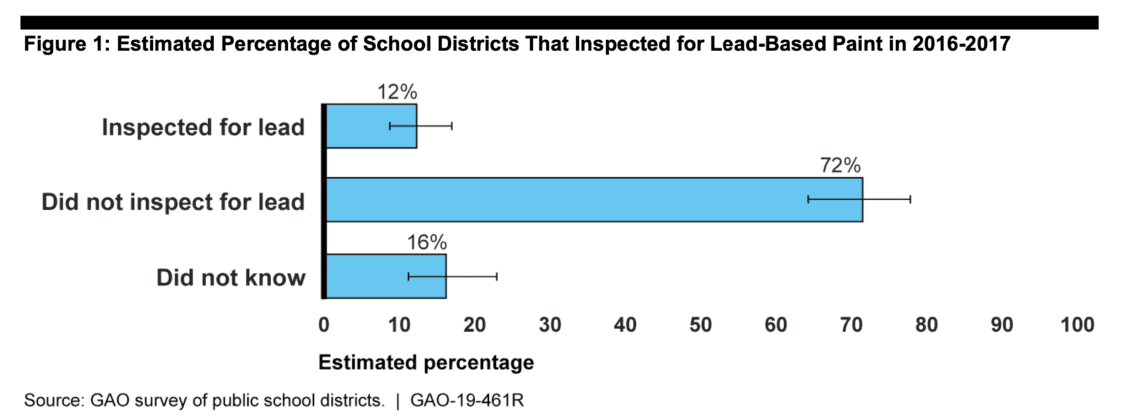When Karla Johnson moved into her Delaware Street house over two decades ago, she signed a disclosure form acknowledging its paint contained lead. She understood that as long as the paint was intact she wouldn’t have to worry about her family’s exposure to the dangerous substance.
But her young son played in the yard and occasionally shoved some dirt in his mouth. Johnson, an administrator at the Marion County Public Health Department’s Healthy Homes program, took him to get tested for lead.
She found out he had lead poisoning.
Johnson’s story is far from an anomaly. Studies show that Black Americans are more likely to suffer from lead poisoning. Exposure can happen as early as inside the womb and continue well into adulthood.
When Johnson tested the soil outside her house, lead levels were between 200 and 300 parts per million. A level below 400 is not considered hazardous for children’s play areas; it is even higher for yards, according to federal standards.
But Johnson says her son’s experience should act as a cautionary tale –– and a reason to rethink what these numbers mean.
“And so I think that even though we say 400 parts per million is considered too high for a child’s play area, I think there’s still an exposure risk even lower than that, you know, especially when children are in it constantly,” she adds.
A few years later, when her son started going to school, he showed some behavioral and educational delays. He needed help, which was hard to access at first.
“I think the federal government could take care of things, but do I think they will? No, I think there has to be the political will, there has to be the willingness to put the money in,” she said.
Johnson said timely maintenance of housing and addressing the root cause of contaminants are crucial to preventing lead poisoning in children –– and that’s what she strives to do at work.
Nationally, there are signs of an enhanced effort to deal with lead contamination.
In a Jan. 27 executive order, President Joe Biden recognized disadvantaged communities have shouldered the biggest burden of pollution. He told federal officials to address this disparity.
Lead contamination is among the priorities.
Garry Holland of the local NAACP said the executive order is promising. He hopes federal agencies use it as an opportunity to bolster community resources across Indiana –– especially funding for educational programs on environmental justice and lead poisoning.
“We want to teach, share our message and launch a sustainable lead education campaign lasting for three to five years,” he said.
The NAACP, the Indianapolis Recorder and other local organizations recently sponsored an online public forum on the lead problem; it included representatives from three federal agencies.
“Over the last few years, we’ve gotten away from grounding the work that we as an agency do in science. And so I’m really excited to say that science is back at the agency,” Rosemary Enobakhare, EPA associate administrator for public engagement and environmental education, said during the forum.
The executive order calls for “40% of the overall benefits to flow to disadvantaged communities.” It’s aimed at environmental justice, and the goals include reducing legacy pollution and developing clean water infrastructure.
While Biden’s executive order may be promising, it lacks specifics on identifying disadvantaged communities and allocating financial resources to them.
One step that the EPA is working on, Enobakhare said, is an Environmental Justice Scorecard –– a tool to rate federal agencies on equity in treating people of color and polluted communities.
Indiana has had its share of public health disasters. In East Chicago, for example, public housing residents lived for years atop a highly contaminated lead smelting site.
At the online forum, officials said that highlights the importance of collaborations among agencies, as well as accountability and oversight.
Lead contamination in schools and day care facilities is another priority issue because it can cause serious harm to children, health experts say.
“There is no safe level of lead exposure,” Dr. Virginia Caine, director of the Marion County Public Health Department, said while moderating the online forum.
Recently, the chair of Indiana’s House Environmental Affairs Committee said he wouldn’t hear a bill requiring preschools and day care centers to test drinking water and take action if lead levels are too high. He said the issue is being addressed at the federal level, but others say federal standards are too lenient.
To minimize hazardous lead exposure for children, the EPA needs to update its guidance for school testing, Diane Raynes, natural resources and environment assistant director at the GAO, said at the forum.
“And the guidance hadn’t been updated since 1991,” she added.
According to a GAO survey presented to Congress in 2018, only 40% of Midwest school districts tested for lead in water, and 30% of themfound elevated levels, Raynes said.
During the online forum, HUD representatives promised more funding to help state and local governments address lead pollution. One option, aimed at old homes, is the Healthy Homes Initiative.
With $512 million available, Paul Diegelman, a regional Healthy Homes representative, said the agency can expand its efforts. “This is the most amount of money we’ve ever had available; it’s a great opportunity to take care of a lot of homes.”
Holland says a takeaway from the public forum is that “there seems to be a certain commitment from the federal government to allocate grants for the communities at large.”
He hopes this will help realize the president’s promise of achieving environmental justice.
This story was reported as part of a partnership between WFYI, Side Effects Public Media and the Indianapolis Recorder. Contact Farah Yousry at fyousry@wfyi.org or 857-285-0449. Follow her on Twitter @Farah_Yoursrym.
RESOURCES
Learn about EPA grants on lead pollution.
For more detailed information about pollution in East Chicago.
To get your house assessed by EPA-certified firms for lead hazards: risk assessment and abatement firms in your area.
To learn more about potential sources of lead at home and how to minimize your family’s risk to exposure.
To find EPA-certified renovation, repair and painting firms in your area to reduce lead hazards at home.
To learn about EPA grants on lead pollution.
For more information on superfund sites and the EPA’s lead sampling in Indiana.
To learn more about the EPA’s Brownfields Program, which provides grants and technical assistance to communities, states, tribes and others to assess, safely clean up and sustainably reuse contaminated properties.
To learn if your child’s school tested for lead levels in the drinking water, what the results were and what treatment steps were taken, contact the school directly. To learn more about lead levels in your home water, contact your local water system.












